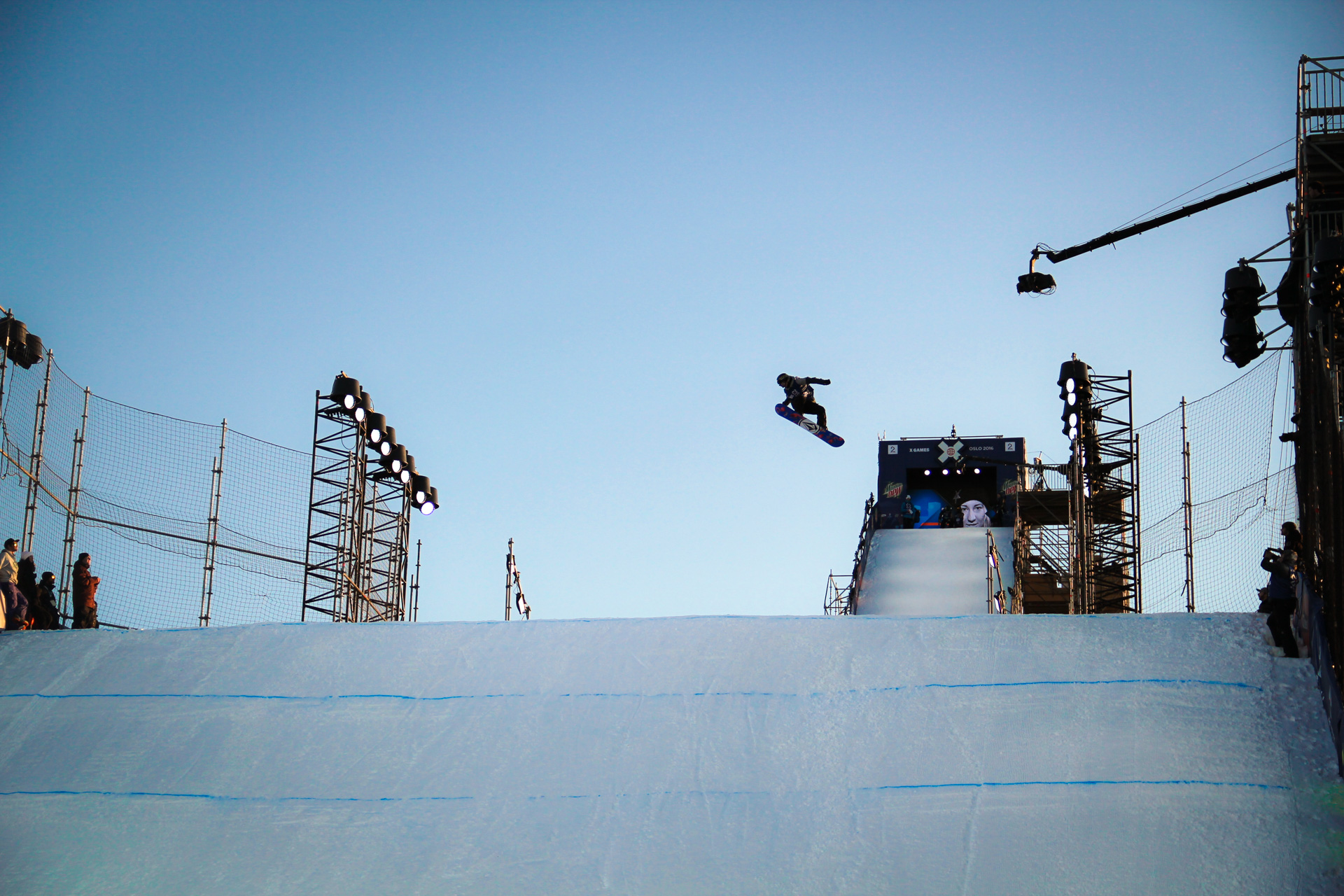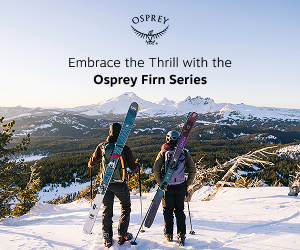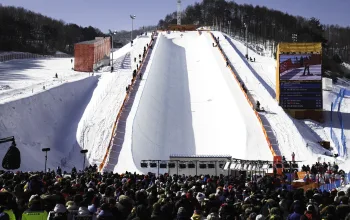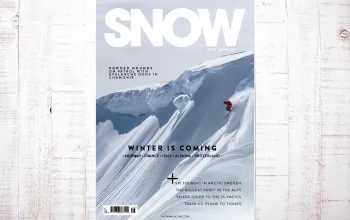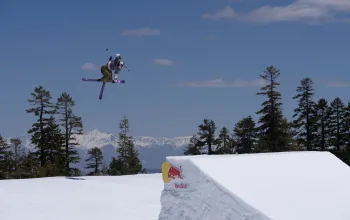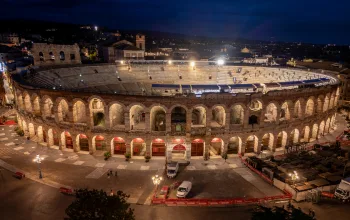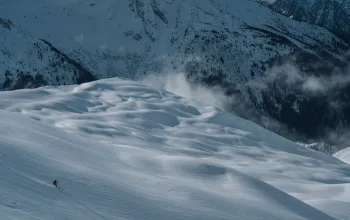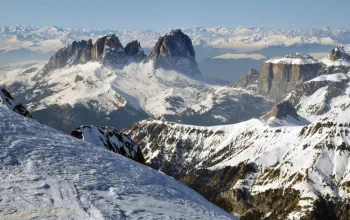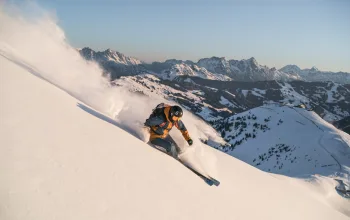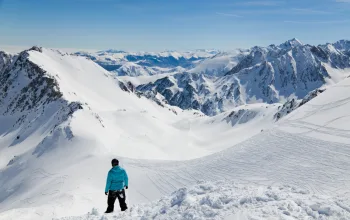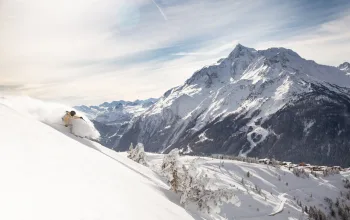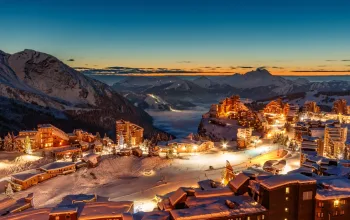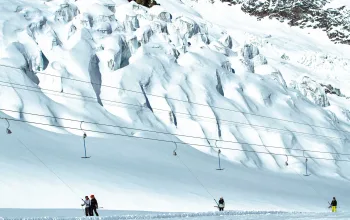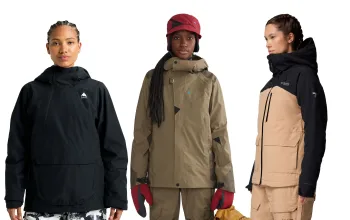Big Air is a freestyle skiing and snowboarding event that made its Olympic debut at the Pyeongchang games in 2018. The event is very simple—you ride off a single, massive jump, and pull the best tricks you can.
Points are awarded for a clean execution, technical difficulty, and style. It’s the ultimate act of showboating in a sport which, let’s face it, is no stranger to showboating.
"It’s the ultimate act of showboating in a sport which, let’s face it, is no stranger to showboating"
Both skiers and snowboarders at the will compete in Big Air at the Milano Cortina 2026 Winter Olympics, and Team GB has some very realistic medal contenders in the form of snowboarder Mia Brookes and skier Kirsty Muir.
You can find out more about them in our guide to the UK's winter Olympic medal hopes. The resort of Livigno (which you can read more about in our guide to Milano Cortina venues) has chosen as the host resort for Big Air, as well as Halfpipe and slopestyle.
For info on how and when to watch the Ski & Snowboard Big Air events at Milano Cortina, consult full schedule of Olympic ski and snowboard events and find out how to stream the games live from the UK, Australia, the US and elsewhere here.
The history of Big Air - Where did the Winter Olympic event come from?
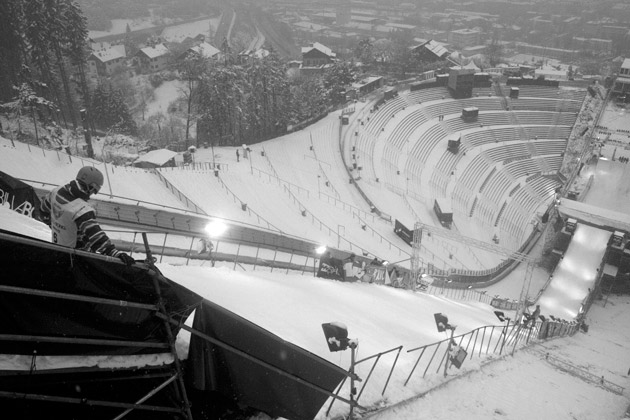
Ski and Snowboard Big Air might be relatively new in Olympic terms but, like all freestyle sports, snowboarding and skiing have a long history of riders sending it off massive jumps, channeling the “go big, or go home” mantra. Single jump competitions themselves have basically been going on since the dawn of time (or at least, since the dawn of snowboarding and freestyle skiing.
Snowboard Big Air debuted at the 2018 Winter Olympics in Korea, and Ski Big Air at the 2022 games in China. But long before the five-ringed circus decided to jump on the Big Air bandwagon, there were massive contests for big prize money. The biggest of which were the Air + Style, which originally took place in Innsbruck, Austria, and the X Games, in the US.
"Big Air has proved popular in part because of its simplicity"
Big Air proved popular in part because of its simplicity. With just one jump, the events were relatively easy to stage at the bottom of ski slopes, in full view of the crowd. You could even build a jump in a stadium—as in the case of the Air + Style, which started in the 1990s in the Bergisel stadium above Innsbruck, a former-Olympic ski jumping arena, and eventually filled football stadiums in Munich and Beijing.
Inner city Big Airs have long been popular with contest organisers too—Quebec City, Montreal and even London's Battersea Power Station have hosted Big Air snowboard events down the years, with the riders jumping off snow-covered ramps built on temporary scaffolding.
Big Air's rules also make it relatively easy to follow.
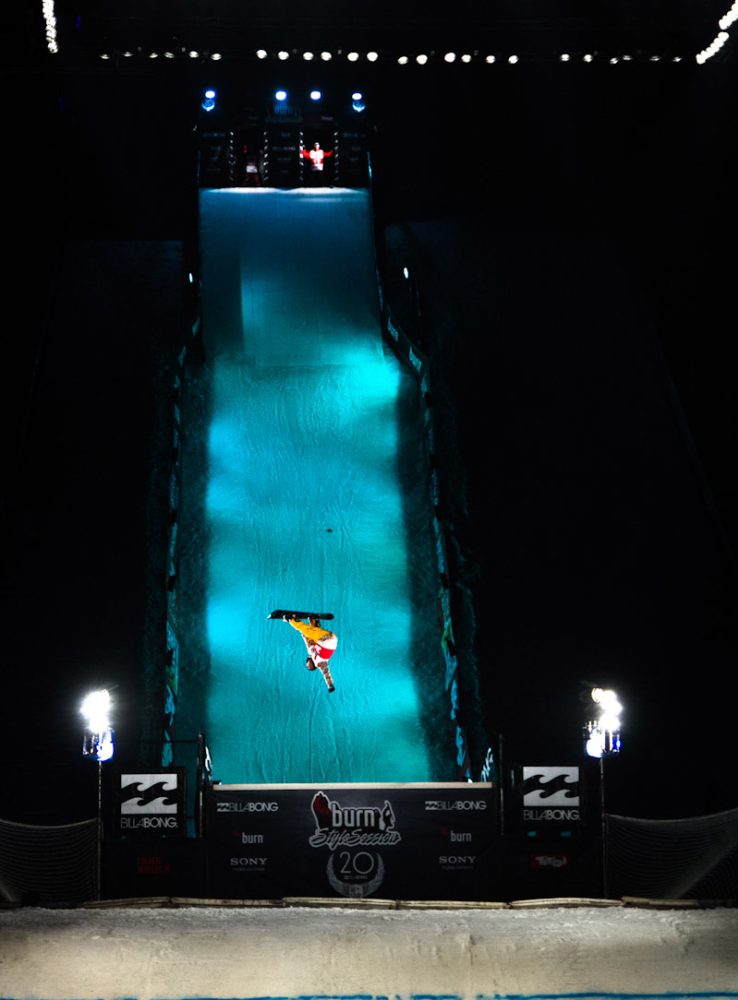
What are the rules of Ski & Snowboard Big Air, and what's the scoring system?
The rules of Big Air at the Winter Olympics are pretty simple. Each athlete has three runs at hitting a single, massive jump, and landing their best tricks. Points are awarded by a panel of judges, based on the judging criteria laid out below.
The combined scores from each athlete's best two runs will give their overall score—but their overall score must include two different tricks. For example, if on run one, a rider does a backflip and scores 50 for it, on run two also does a backflip and gets 50 points for it, and on run three does a front flip for 40 points, the judges will award the rider 90 points, for the two highest scores from different tricks. Easy, right?
In competition, you can expect to see riders put down relatively conservative first attempts, and then go for broke on their third run to try and improve one of the previous two scores. At the Milano Cortina Winter Olympics, there will be a qualifying round to whittle the field down, immediately followed by the final. Scores are not carried over from the qualifying rounds.
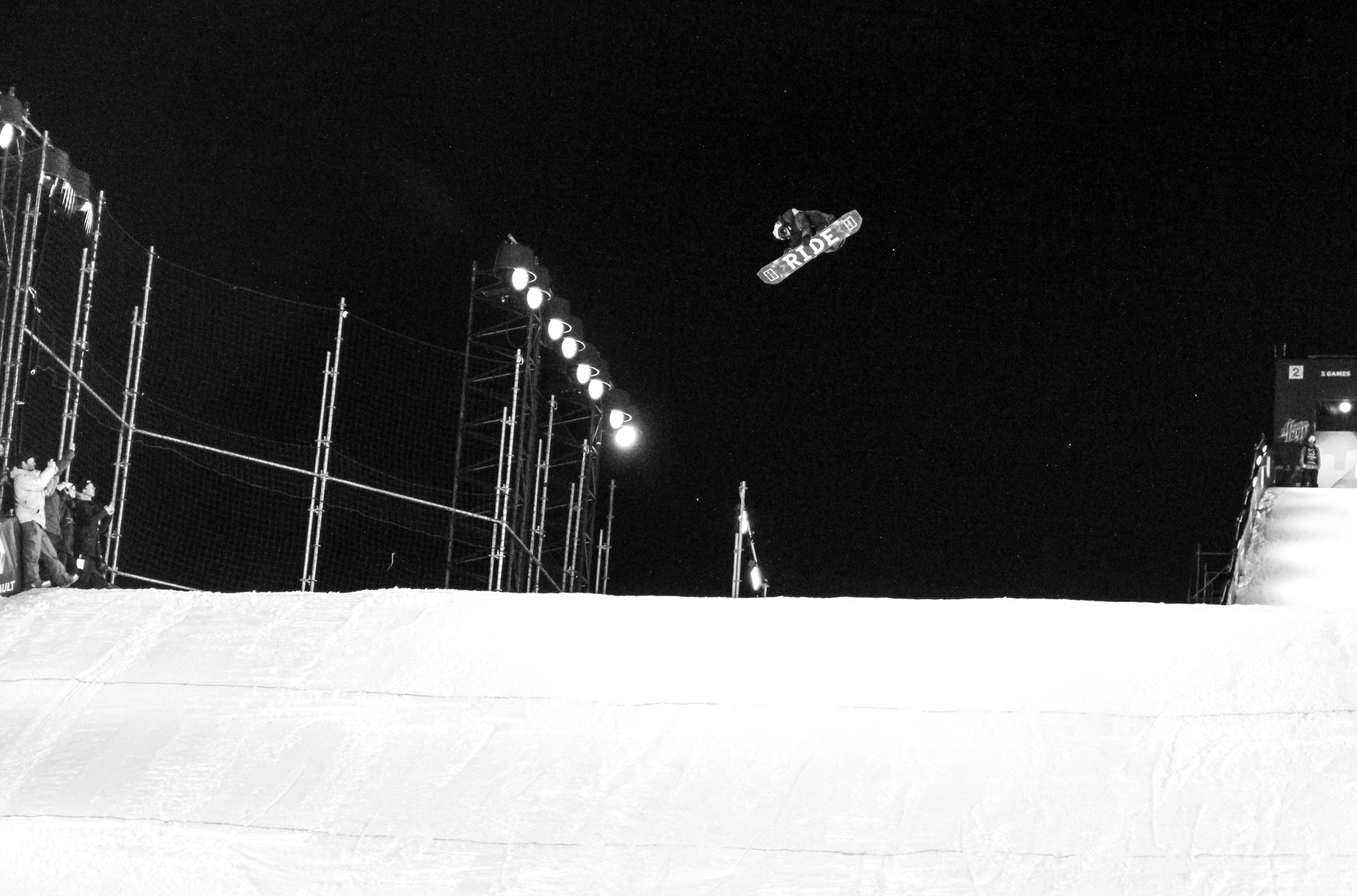
Who are the judges for the Olympic Big Air?
Who are the judges at are the Olympic Big Air? The rules state that the judging panel has to be made up of at least six individuals each from different nations.
One of these is the head judge, who doesn't score directly himself—he's responsible for collecting the scores and ensuring the smooth running of the panel.
Each judge gives an overall impression score out of 100 for each trick, basing their scores on the five judging criteria listed below. The highest and the lowest of the five scoring judges verdicts are discounted, so as to eliminate any outliers which might skew the score unfairly. The final trick score—the one displayed on your TV screen—is the average of the remaining three judges' scores.
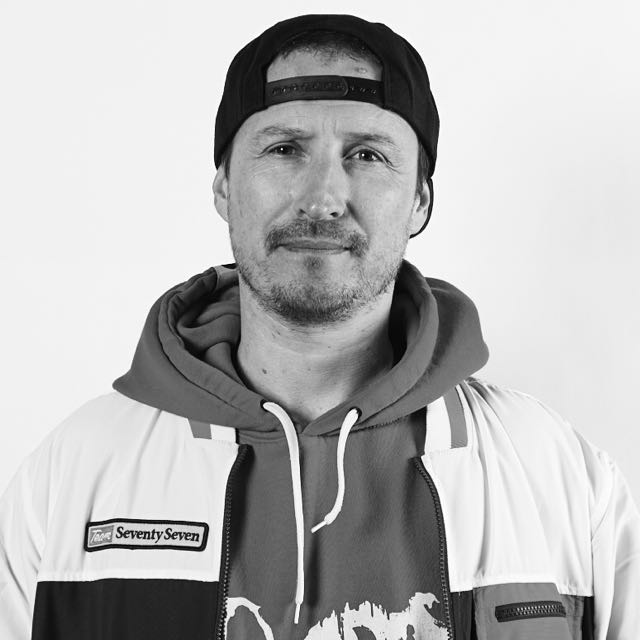
Judges are often former pro athletes themselves, and are all highly-experienced freestyle snowboarders or skiers who've judged multiple events around the world.
They must attend a judging clinic every two years at least in order to maintain their license. This does not eliminate all controversy, however, as the snowboard slopestyle event at the 2022 Beijing Olympics proved...
What is the judging criteria for the Olympic Big Air?
The judges' overall impression score, given out of 100, is based on five criteria that you can remember using the (admittedly clunky) acronym: DAVE-P.
Difficulty
This evaluates how technically difficult the trick each rider performs is. As a general rule of thumb, the more spins and corks a snowboarder of skier does, the harder it is, and will be rewarded with a higher score. With the race to spin and dip as much as possible potentially coming to a standstill, riders can further increase the difficult of their trick in numerous ways.
Taking off backwards on skis, known as switch, will also bump up the difficulty score. For snowboarders, switch stance means taking off with your unnatural foot first—so if you're a regular rider, taking off goofy and vice-versa. Switch backside spins are generally considered the hardest on a snowboard.
Adding a grab to your trick—literally grabbing your board or skis as you spin—increases the difficulty level. Certain grabs, like tail or nose grabs, or grabs where your arms are crossed, are considered more difficult than others.
Amplitude
Put simply, this is how big the skier or snowboarder goes off the jump. High amplitude scores will be awarded for going big, but also landing in the "sweet spot" of the run-off.
Going too big and missing the landing shows is likely to lead to a lower execution score (see below), although, given that landing like this will almost certainly hurt, the rider may not care too much in that precise moment.

Variety
As in all freestyle events, athletes in Big Air are required to show that they're not just one-trick ponies. But how do you demonstrate a varied repertoire when you literally only have one jump, you ask? Well, this is where the "best two runs of three" scoring system comes into play. Riders must land at least two different tricks in their three runs, with the best two scores being added to make their total.
To be counted as properly different, tricks should involve spinning in different directions (backside or frontside on a snowboard, right side or left side on skis), different grabs, and/or taking off switch.
Execution
This is the closest thing to score for style. To score highly on execution, the rider must be in control throughout the trick (so no arms waving as if they’re winding down windows in a car). Their take off will be clean, and their landing will be "stomped," with no hands used to stabilise themselves. Grabs should be held for as long as possible, and "tweaking" or "poking" your trick (pushing one leg out as you grab it) will earn you extra points.
It's worth noting that unlike say, gymnastics, where a lose arm touching the mat would count as a fall, snowboarders and skiers can sometimes brush the ground with their hands on landing without being penalised—as long as it's obvious they overbalancing. However, "a revert" on the landing—switching your stance as you ride out because you haven't properly stopped the rotation—is often marked down as badly as a fall, even if you stay on your feet.
Progression
The FIS Judging Handbook says: "If a competitor displays a trick, trick variety, grab or anything that stands out as new, unique, rare, innovative or creative for that level of competition, judges can recognise that as progression."
Essentially, extra points should be awarded for doing something that hasn't been done before.
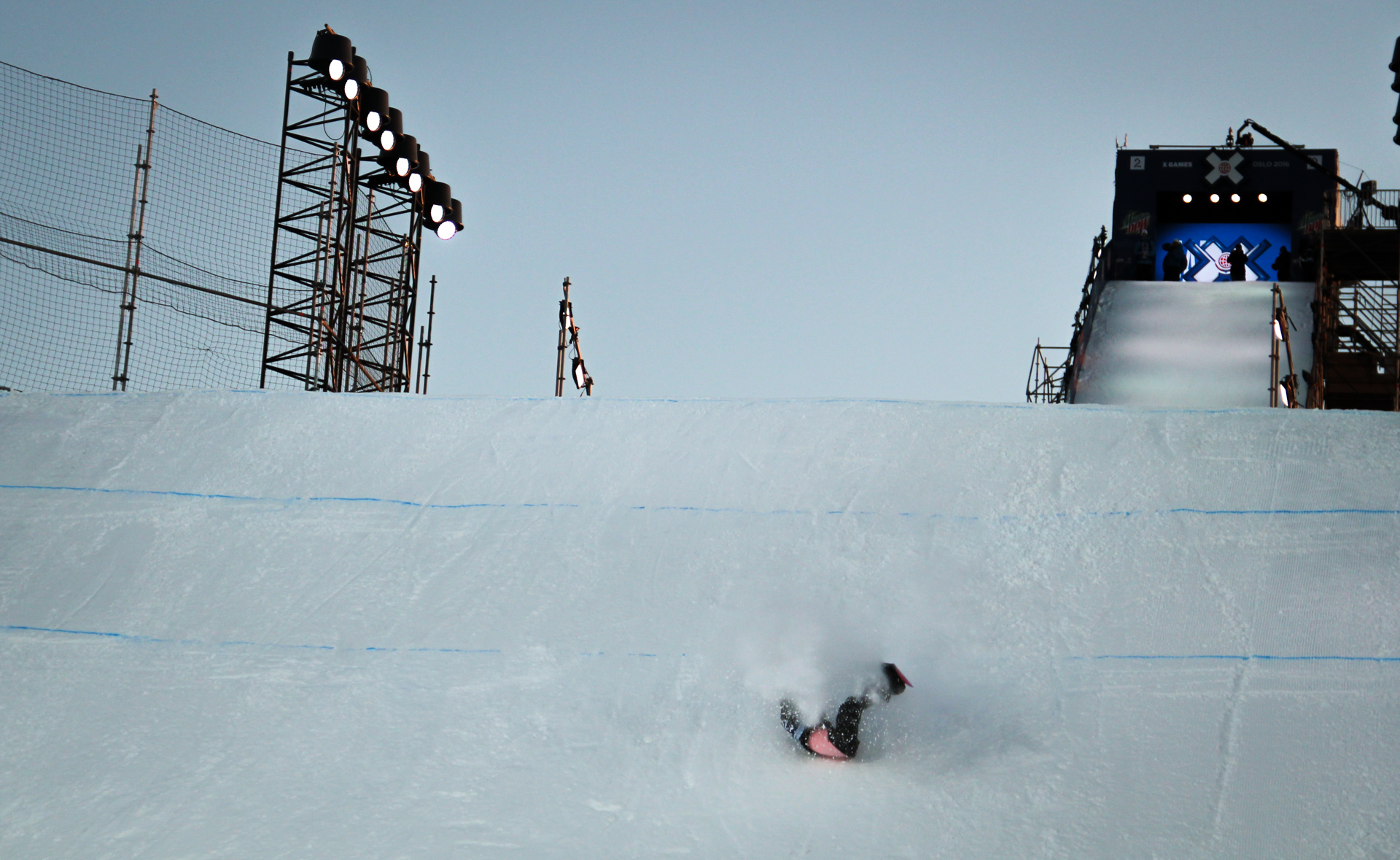
What tricks are likely to win the Big Air at the Milano Cortina Winter Olympics?
So, what trick will win Big Air at the 2026 Winter Olympics? Despite what the event’s name suggests, it’s not always the biggest trick that wins Big Air. Depending on the conditions, and the jump’s size, the outcomes to events can be extremely varied.
If conditions are near perfect, however, we may see spins as big as a 2340 from both the men's freeskiers and snowboarders—that's at the last Winter X Games in Aspen, both Japanese snowboarder Hiroto Ogiwara and Italian skier Miro Tabanelli landed 2340-degree spins—an incredible six and a half complete rotations.
"The points on offer for progression encourage riders to up the ante in big contests—and there are none bigger than the Winter Olympics"
In the women's big air events, you can expect to see 1440s—or four full rotations. Of course, the points on offer for progression encourage riders to up the ante in big contests, and there are none bigger than the Winter Olympics. And things move incredibly quickly in snow sports. At the previous Winter Olympics in Beijing, the biggest snowboard trick on display was an 1800, which won Chinese rider Su Yiming the gold. It probably wouldn't even get him through qualifying for Milano Cortina.

Where and when can I watch Big Air at the 2026 Winter Olympics?
For a full rundown of all the freeski and snowboard event times at the Winter Olympics and how to stream the Milano Cortina Games live, check out our complete guide.
All times below are for the UK. For "live" Italian times, add an hour. UK viewers can stream every event live through Warner Bros Discovery’sDiscovery+platform—you’ll need to buy a subscription.
Alternatively, the BBC has bought a rights package that entitles them to air at least two live events per day on BBC One and Two, as well as highlights packages.
To stream the Milano-Cortina 2026 Olympic Games for free from the UK, you’ll need an iPlayer login and a TV license. The BBC will be making more than 500 hours of coverage available on BBC iPlayer.
Snowboard Big Air Event Times (UK / London Time Zone)
Wednesday 5th February, 18:30-20:45: Men's snowboard big air qualification
Friday 7th February, 18:30-20:05: Men's snowboard big air final
Sunday 9th February, 18:30-20:45: Women's snowboard big air qualification
Tuesday 11th February, 18:30-20:05: Women's snowboard big air final
Freeski Big Air Event Times (UK / London Time Zone)
Saturday 14th February, 18:30-20:45: Women's freeski big air qualification
Sunday 15th February, 18:30-20:45: Men's freeski big air qualification
Monday 17th February, 18:30-20:05: Men's freeski big air final
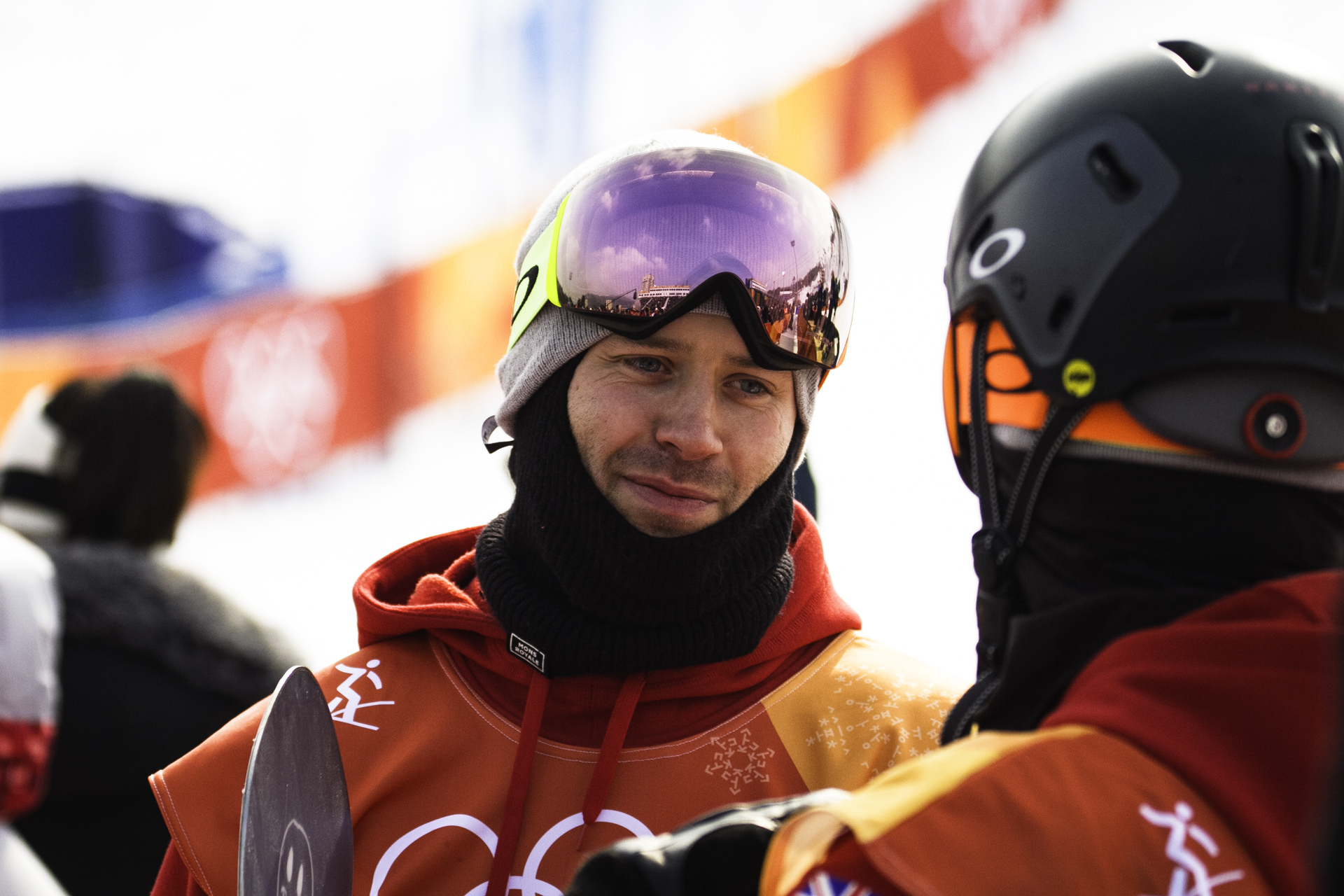
What do all the words mean? Snowboard & Ski Big Air glossary & key terms
If you’re new to freeskiing or snowboarding, the language of Big Air can be incredibly confusing. Here, we're going to cover the basics of freestyle skiing and snowboard speak, as well as covering a few essential phrases. We'll even throw in a few extras, so you can hold a conversation with a native snowboard speaker without feeling silly.
As most of the freeskiing phrases are adapted from snowboarding (which in turn, takes much of its terminology from skateboarding and surfing) we've focussed on snowboard terms here.
Regular or Goofy: This is the stance in which the snowboarders stands on their board. Regular is when the rider leads with their left foot, with their right foot trailing. Goofy is when they lead with their right foot, and have their left trailing. There is no benefit or disadvantage to either stance, it’s just whatever feels most natural to the individual.
Despite sounding negative, goofy actually derives from the Disney cartoon dog, who famously surfed with his right foot forward in an early cartoon, leading right-footed surfers to adopt the name. (Yes, this is the level we’re sometimes working on.)
Switch: You will hear "switch" a lot. It refers to when the rider is traveling on the stance they find the least natural, so regular riders traveling goofy, and goofy riders traveling regular. This may sound simple if you’ve never tried it, but it’s essentially like doing everything backwards—a bit like writing with your weaker hand. Taking off switch, landing switch, or both, is harder, so adds to the difficulty points.
For freeskiers, "switch" stands means skiing backwards, looking over your shoulder.
Frontside and backside: These refer to the direction of the spin on a snowboard. Spinning frontside means opening up your chest towards the lip of the jump first (so spinning anti-clockwise for regular riders, clockwise for goofy-footers). Spinning backside means closing your shoulders to the lip of the jump (ie. spinning clockwise if you're regular, anti-clockwise if you're goofy).
Backside spins are often assumed to be more difficult, and switch backside spins are generally the most difficult of all.
Left side and right side: These are the freeskiing equivalents of frontside and backside. Most skiers will have a preferred way to spin, and spinning their non-dominant way will often earn them more points.
Cab: A "cab" spin on a snowboard is a switch frontside spin. So a cab 5 is a switch frontside 540, a cab 16 is a switch frontside 1620 and so on.
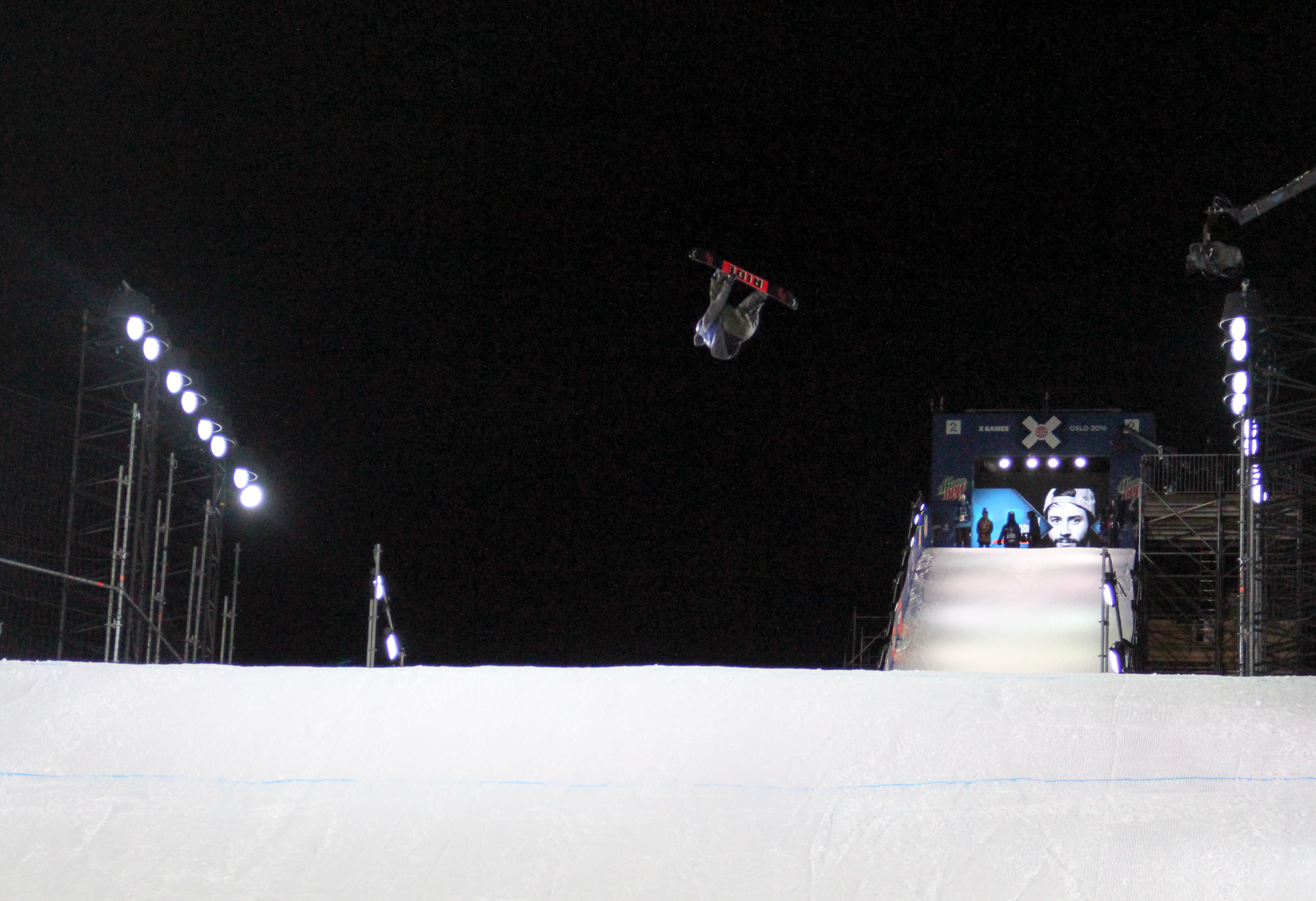
Revert: A revert is when a skier or snowboarder stays on their feet after the landing, but switches stance to keep their balance. It's a big no-no style-wise, and will result in points being deducted for poor execution.
Kicker: Kicker is the name often given to the actual jump that the riders fly off during the Olympic Big Air competition. It is sometimes also known as a Booter, or even a cheese wedge.
“Some grabs are deemed poor form, or even illegal in snowboarding—grabbing where your boots meet the board will see you lose style points”
Transition or Tranny: No, this is not a reference to anyone's gender identity, it's what skiers and snowboarders call the section of the jump where the downslope turns into the takeoff. A long smooth transition is generally preferable, as a short transition means a lot of compression through your legs before take off.
Knuckle: The Knuckle is area after the jump, where the terrain goes from being horizontal to sloping down to become the landing. Landing on the knuckle not only shows poor execution, but also hurts like hell.
The Flat or Flat Bottom: If the knuckle comes before the sweet spot of the landing, the flat—sometimes called Flat Bottom—comes after it. Landing on the Flat will cause judges to deduct points and, most likely, the waiting medical staff to leap to their feet.
Safety Run: A Safety Run is when a rider attempts to land a more conservative trick to ensure they get a good score on the board, ahead of trying more difficult runs later on. With the final of Winter Olympic Big Air being a "three run – best two count" format, expect many riders to have a Safety Run on their first go, before unleashing more spectacular tricks on runs two and three.
Cork: You will hear the term, cork, and specifically Double Cork, Triple Cork, and Quad Cork a lot during Big Air. A Cork is an off-axis spin where the riders head and shoulders dip below their hips while they’re spinning through the air. Often, Cork tricks are abbreviated, dropping the word “cork” completely. So a Double Cork becomes a Double (or even Dub), A Triple Cork becomes a Triple (or sometimes Trip), and so on. “Cork” derives from the word corkscrew.
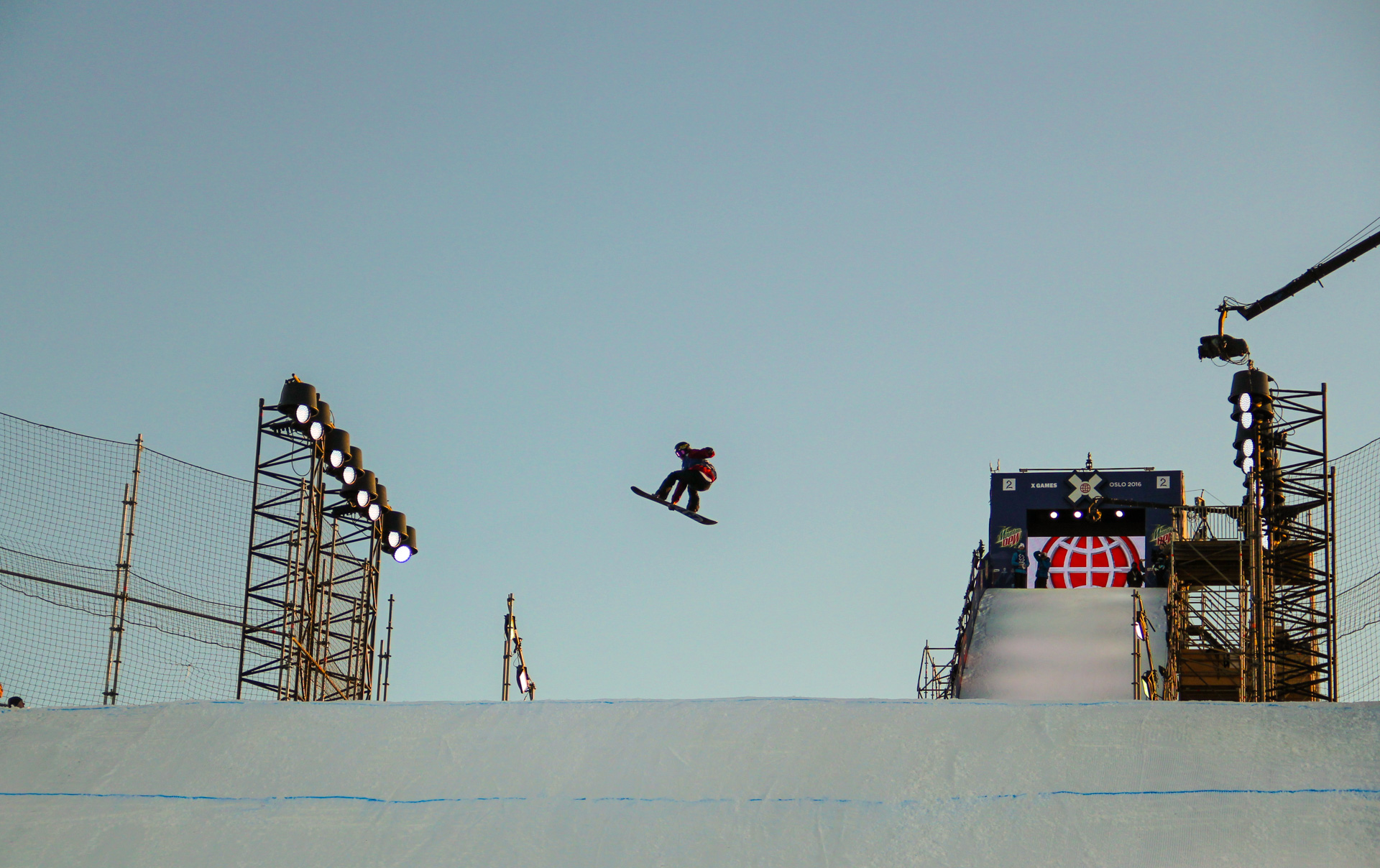
Rotation: Rotation is the amount of degrees a snowboarder spins through the air. They’re measured in units of 180° which the fans of protractors among you will know is half a full turn. It’s rare to see rotations anything under 540° in Big Air competitions but in the men’s competition in particular, they can go as far as 2340° (6.5 full rotations).
In skiing and snowboarding, it’s common for people to refer to rotations more simply, by knocking off the last two numbers. As such, a 180° becomes a One. A 900° is a Nine. A 1620° is a 16 etc. Add to this the other variants we’ve already learnt, and before long you’ll find yourself knowing exactly what a Cab Dub 10 means—try that out on your friends down the pub!
Flat Spin: A Flat Spin is mercifully simple to understand, and refers to when a skier or snowboarder rotates through the air without dipping into a cork. While corking your spins can add style points, flat spins are sometimes harder, when it gets to monster rotations—a flat spin 1620 or above is crazy difficult.
Grabs: A grab is when a rider or skier grabs their board or skis with their hand or hands. This is done to add style, and shows the judges that they are in control of their trick. Some grabs are harder than others, some are more stylish than others, and some suit certain tricks more than others. Common grabs you’ll hear are mute, indy, stalefish, melon, and tail.
More complex snowboard grabs (which would usually be expected to score higher) include the crail and japan. Many skiing grabs take their names from snowboarding, but there are a few exceptions—including the relatively easy safety grab, and more complex grabs like the blunt, critical and octograb.
"More complex snowboard grabs include the roast beef, chicken salad (no, we're not kidding!) and the holy crail"
There are also some even more obscure grabs that are more complex than an experimental Radiohead remix album, but may just crop up once in a blue moon—including ski grabs like the toxic and crouton, and snowboard grabs like roast beef, the chicken salad (no, we're not kidding!) the beef curtains and the holy crail. Told you some of the lingo could get confusing!
Some grabs are deemed poor form, or even illegal and will see judges deduct points. These include snowboard grabs like the tindy (halfway between a clean tail grab and an indy) tailfish (halfway between a tail and a stalefish) and any boot grabs.
Grabs are a subjective thing, but the almost universally accepted King of grabs is a method, owing to how stylish it looks when performed well. However, it’s unlikely this will be seen in Olympic Big Air as it is not conducive to doing lots of spins.
A version of this article originally appeared on Mpora.com, and it's published here under license.


